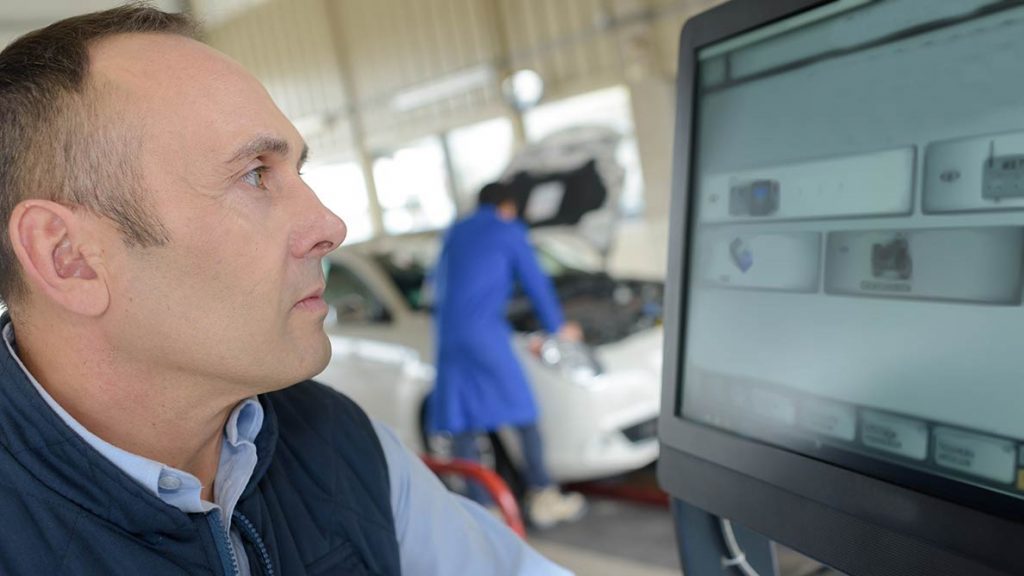With the first two rules for making your body shop successful, you learned to set goals for your team and to communicate them to your team.
Now the next crucial rule is to monitor and analyze goal achievement. Doing this properly is a matter of routine. You need to do things right every day.
You are therefore looking for a simple process which will provide you with accurate and useful data, and which will consume little time from the users, let alone from the productive employees.
So, to recap, the best elements of a maintenance and analysis process designed to improve body shop performance are:
- Precision
- Simplicity
- Speed
Pitfalls to Avoid
Thinking you are doing the right thing; you invest in a management system that will solve all your problems. You are easily seduced by this new gizmo that does it all, that integrates with everything and that requires everyone’s attention.
Many new management systems invite all employees to collaborate and be responsible for their own data entry. If the initial promise seems interesting, managers can rarely turn it into success.
Generally, the bigger the workshop, the worse it is. The larger the team, the more difficult it is to maintain discipline for good data entry by the whole team. When the quality of the data entered in the system depends on everyone, it depends on no one, especially when one’s main task is repairing cars and not data entry. In fact, even the famous punch systems are fallible.
In addition, everyone spends time documenting follow-ups, often resulting in erroneous data. Everyone’s time is therefore more or less well invested. On the one hand, the manager sees bad data leading to bad decisions based on bad information and, on the other hand, the body repair experts decrease their touch time by spending it on data entry.
They could spend this precious time on repairs. People often believe that data entry only takes 5 or 10 minutes per day, so not very long. But 5 minutes a day over 52 weeks is almost 22 hours per productive employee. Hours literally wasted on the production floor. In a shop with 5 productive employees, this represents 110 lost hours per year. If your staff is 130% efficient and your average hourly rate is $65, that is $9,295 in revenue that disappears into thin air.
When calculating the cost of collaborative software, it is important to consider the time that productive employees invest in it versus the benefits. Also, 5 minutes a day is generally very optimistic. We see a lot of 10 minutes or even 15 minutes invested for some platforms.
In short, investing in a management system is a decision that does not provide what you want from a good process to help you maintain and analyze your performance. It is not fast or accurate. It may be simple, but it’s not worth much if the first two conditions are not met.
What Tool You Want in Your Shop to Monitor Performance
A simple, easy-to-learn tool that quickly gives information when consulted. You want access to structuring indicators such as WIP (work in progress), average repair time per repair size, painting time per day, etc.
A tool that people can use to communicate, they can look at it together and share a common language around business success.
A tool manipulated by a user, for example the floor manager, but that will gain in accuracy through your communication skills.
An automated production planning tool that allows the user to save maximum time. The tool will be monitored once a day to make necessary or ad hoc urgent corrections.
Making Observations
It is not enough to see data and say that you have succeeded or failed. You need to find out why so you can avoid repeating behaviours that are detrimental to production or, conversely, to repeat behaviours that are a lever for production.
You can analyze your 5 best and 5 worst repairs each week. Following your analysis, communicate your victories, congratulate your teams, warn them about behaviours that undermine your productivity and give them guidelines.
The quality of the estimate and the discipline of ordering parts before the start of repairs are examples of important key moments that need to be improved.
Cooperating to Improve
By comparing your analysis with other workshops that are experiencing a similar reality to yours, you may be impressed by what you discover.
Sometimes you think that you are doing the best you can, and that the industry is to blame for your problems. Then you realize that there are very profitable workshops operating in the same industry. Only, the managers in these workshops put a lot of efforts into the internal improvements they could make, knowing that they had little power over phenomena external to their company.
What ideas can you borrow from colleagues who are doing better than you? Those who seek these answers often become the people other workshops will rely on and from whom they will later draw inspiration.
Author: Alexandre Rocheleau
Collaboration: Charles Aubry
Translation: Sophie Larocque
Editing: Émilie Blanchette
